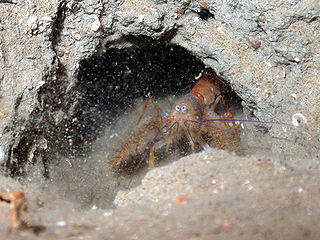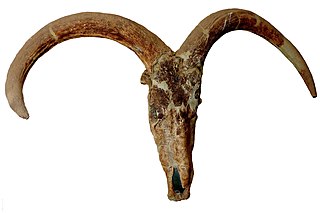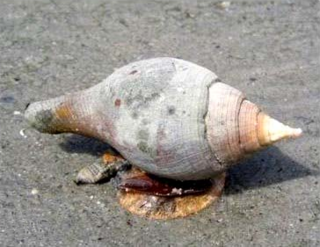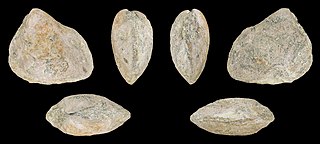
Furry lobsters are small decapod crustaceans, closely related to the slipper lobsters and spiny lobsters. The antennae are not as enlarged as in spiny and slipper lobsters, and the body is covered in short hairs, hence the name furry lobster. Although previously considered a family in their own right, the furry lobsters were subsumed into the family Palinuridae in 1990,. Subsequent molecular phylogenetics studies have confirmed that the furry lobsters genera don't form a natural group and were both nested among the spiny lobster genera in family Palinuridae. The family now includes the two furry lobster genera and ten spiny lobster genera.

Hippolytidae is a family of cleaner shrimp, also known as broken-back shrimp or anemone shrimp. The term "broken-back shrimp" also applies to the genus Hippolyte in particular and "cleaner shrimp" is sometimes applied exclusively to Lysmata amboinensis.
Charles Spence Bate, was a British zoologist and dentist.

Pelorovis is an extinct genus of African wild cattle which existed during the Pleistocene epoch. The best known species is Pelorovis oldowayensis from Olduvai Gorge in Tanzania, from the Early Pleistocene. The species "Pelorovis" antiquus from the Late Pleistocene-Holocene has since been moved into Syncerus, the same genus as living African buffalo.

Crangonyx is a genus of crustacean in family Crangonyctidae. Crangonyx species can live in marshes, savannas or swamps as well as caves. It contains the following species:

Acanthacaris is a genus of deep-water lobsters. It contains two species, A. caeca and A. tenuimana, and is the only genus in the subfamily Neophoberinae.

Turbinella is a genus of very large sea snails with an operculum, marine gastropod mollusks in the subfamily Turbinellinae of the family Turbinellidae.

Benthesicymus is a genus of prawns, containing the following species:

Mangelia is a large genus of sea snails, marine gastropod mollusks in the family Mangeliidae.

Syncerus antiquus, is an extinct species of buffalo from the Pleistocene of Africa. It was one of the largest species in its family, potentially weighing up to 2,000 kilograms (4,400 lb). Due to this fact, it is sometimes known as the African giant buffalo. Syncerus antiquus became extinct at the end of the Late Pleistocene about 12,000 years ago or even during the Holocene, some 4,000 years ago.

Aristeus antennatus is a species of deep-water prawn, commonly known as red prawn or prawns from Palamós. The exact same crustacean is also fished in the Mediterranean Spanish towns of Dénia, Garrucha and Huelva. It presents a very intense red color and it is valued for its fine, firm and tasty meat. It is fished with the technique of bottom trawling and in summer they are usually found more exemplaries and bigger.

Aristeidae is a family of Dendrobranchiata decapod crustaceans known as deep-sea shrimps, gamba prawns or gamba shrimps. Some species are subject to commercial fisheries.

Solenoceridae is a family of decapods, containing 10 genera. Members of this family are marine, inhabiting shallow and offshore waters from the mid-continental shelf, ranging from depths to 1000 meters deep. Members of this family are also sometimes confused with other commercial shrimp species.

Hymenopenaeus is a genus of prawns containing 17 species.

Solenocera is a genus of prawns in the family Solenoceridae. Solenocera occur from 0 to 2,067 meters deep in the ocean.

Acanthephyra is a genus of shrimp in the family Acanthephyridae, with species that live at depths from 0 to more than 5000 meters deep below the ocean surface.
Atyoida is a genus of freshwater shrimp in the family Atyidae. There are four species in the genus, each endemic to a different island group. The type species, Atyoida bisulcata, is endemic to Hawaiʻi and described by John Witt Randall in 1840.

Crassatella is a genus of saltwater clams, marine bivalve molluscs of the order Carditida.

Hadropenaeus is a genus of prawns within the family Solenoceridae. Members of this genus are found at depths up to 1280 meters.

















